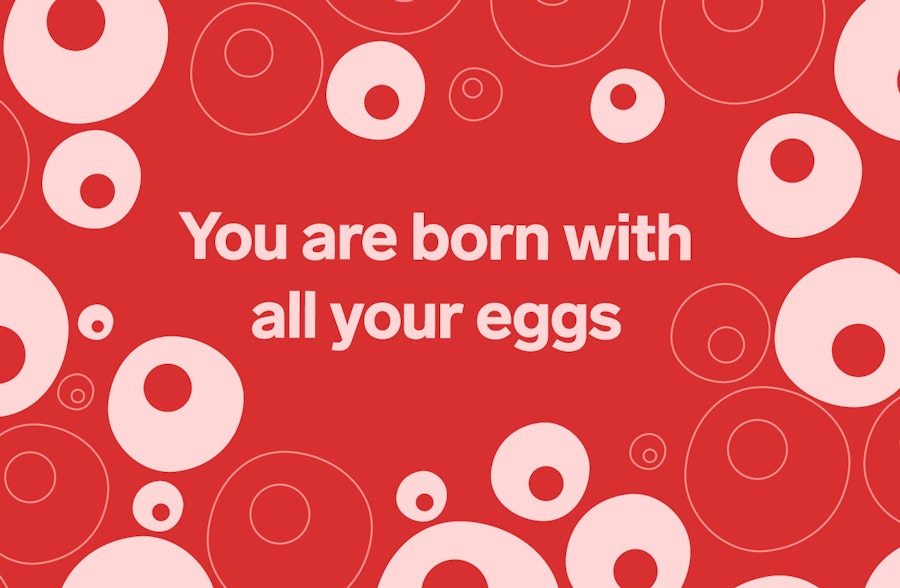Anovulatory cycles explained
What is anovulation?
Anovulation or an anovulatory cycle is a menstrual cycle with no ovulation. This means an egg cell isn’t released by the ovaries which normally happens at the end of the first stage in the menstrual cycle, known as the follicular phase. Ovulation is necessary for conception, as pregnancy happens when sperm fertilizes an egg cell - so you can’t get pregnant with anovulation as no egg cell is released.
Anovulatory cycles are pretty common and most women will experience them throughout their fertile lifetimes. However, anovulation is most likely to occur in the adolescent years when women first get their periods and around menopause before eventually ovulation (and menstruation) stops altogether.
Symptoms of anovulation
Unless you are tracking your ovulation, you might be completely unaware that you have experienced an anovulatory cycle. Period tracking alone, may not be enough for you to identify an anovulatory cycle. However, there are a few things to look out for that may indicate you are having an anovulatory cycle. If your period comes late, or if you experience spotting mid-cycle, you might be experiencing anovulation.
It’s worth knowing that spotting can also be a symptom of implantation bleeding in early pregnancy, while some women spot around their ovulation day (this can make it even harder to tell if you’ve had an anovulatory cycle).
Anovulatory cycles are often longer or shorter than regular cycles. While it’s not technically a period, it can be difficult to tell the difference as there is usually still some bleeding in an anovulatory cycle. This is called a withdrawal bleed and is caused by a lack of the hormone estrogen. Towards the end of your cycle, you may also notice changes to PMS symptoms, as your hormone levels are different during an anovulatory cycle.
Why didn’t I ovulate this cycle?
If you haven’t experienced ovulation this cycle, you’re probably wondering why. Anovulation happens when there is an imbalance of hormones. These are finely tuned to regulate the phases of the menstrual cycle. There are a number of factors that can lead to anovulatory cycles. If you’re concerned or are being impacted by anovulatory cycles, we recommend you talk to your doctor or gynecologist.
Causes of anovulation:
- Severe changes to diet and/or exercise
- Prolonged stress
- Disruption to routine
- Existing medical conditions such as PCOS
- Menopause
Anovulation and birth control
Whether or not you ovulate while taking birth control depends on the type of contraception you’re on. Hormonal birth control works by suppressing the hormonal changes which regulate ovulation. This means ovulation simply doesn’t happen when you use types of birth control like the pill or the hormonal IUD.
Non-hormonal birth control doesn’t alter ovulation, instead, it either works by preventing the sperm and the egg cell meeting (as with a barrier method such as a male condom), or by finding the fertile window and avoiding unprotected sex on those days.
Some hormonal birth control methods that stop ovulation include:
- The birth control shot/injection
- The hormonal IUD
- The hormonal implant
- The birth control pill
- The NuvaRing
- The birth control patch
Taking emergency birth control, or Plan B (the morning after pill), can also stop ovulation. Emergency birth control can be effective for up to five days after unprotected sex, although Plan B may not work if you have already ovulated when you take it.
Cycle tracking and anovulation
Women who keep track of ovulation are more likely to notice irregularities and changes to their bodies, such as anovulatory cycles. Knowing your ovulation means you also have a better awareness of your fertile window and understanding your fertility is key to both planning a pregnancy and preventing one.
Since every woman is different, her cycle is different too. One way to know if ovulation has happened is to analyze temperature data. A rise in body temperature can confirm ovulation has happened. Because Natural Cycles works by analyzing basal body temperature, this means the app can let you know directly if you are having an anovulatory cycle. The app gives you a daily fertility status, as well as regular updates tailored to your cycle, such as PMS alerts and when to carry out a self-breast exam.
Did you enjoy reading this article?
